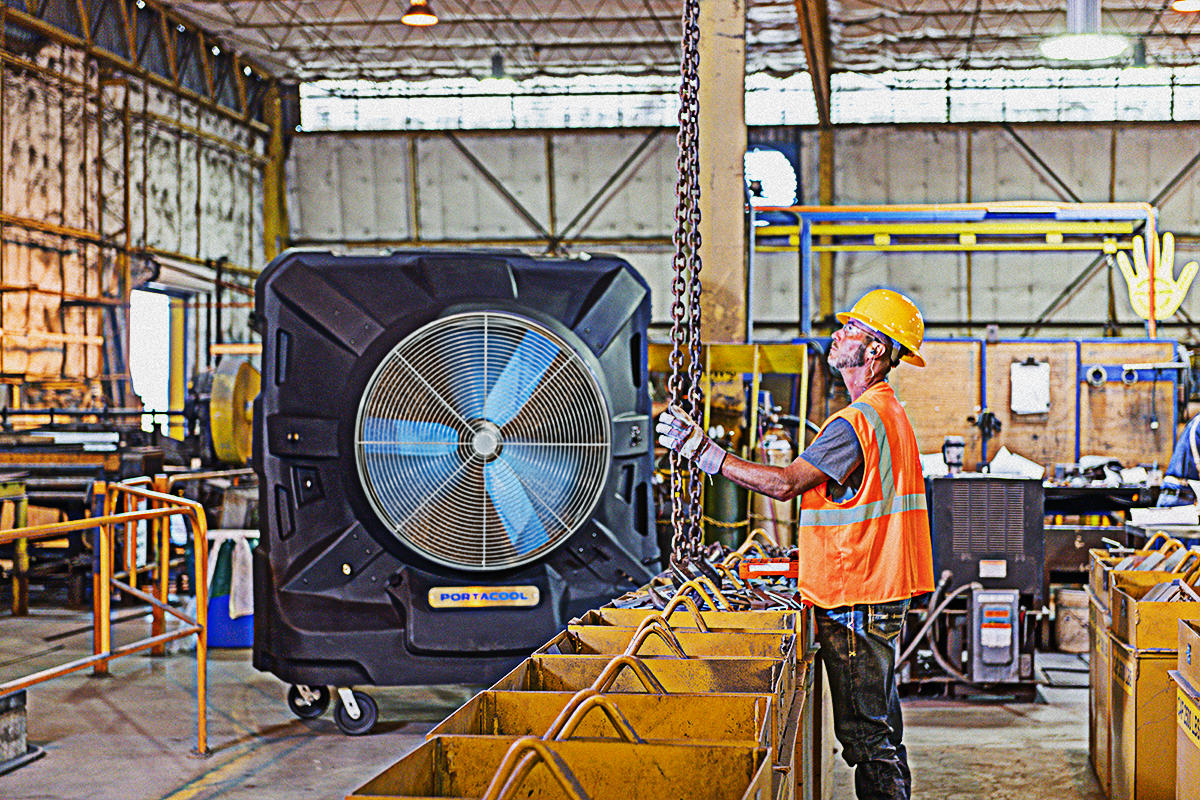
When we think of traditional personal protective equipment or PPE, we can find a full list of materials that provide safety for workers that quite literally cover them from head to toe. Items such as hard hats, safety goggles, gloves, and shoe covers are common safety gear for many jobs, but when it comes to PPE, employers must tailor requirements to their environment.
The Occupational Safety and Health Administration (OSHA) requires that all employers assess their workplace for hazards and certify their assessment. As the National Safety Council notes, “You can’t eliminate all physical hazards through engineering or administrative controls. Personal protective equipment provides a last line of defense. However, data shows that most workers who suffer eye, head, and foot injuries aren’t wearing PPE. These injuries can be lessened or avoided altogether with proper PPE.”
Relative to work-related heat situations, employers have a duty to keep their employees safe from the ravages of extreme heat. It is estimated that more than 1,300 deaths per year in the United States are due to extreme heat. It is important to note that heat-related illness and death is preventable.
Proactive forethought with proper training and resources can go a long way to combatting heat-related issues. Heat should be accounted for in employer assessments for physical hazards. In addition to the climate, heat can be generated by machinery and increase the average ambient temperature of the surrounding environment. Additionally, while helpful and often necessary, the usage of certain PPE – such as a protective suit – can be an added source of warmth.
Combatting Heat – Tools to Have
For heat-related hazards, employers must provide hydration and shade at the bare minimum. We covered this in a recent blog about mitigating heat issues and OSHA guidelines via its “Water. Rest. Shade. Keeping Workers Safe in the Heat.” campaign.
With the basics of hydration, breaks, and shade cover, the next step is to train supervisors to account for the heat index in the summer to accurately reflect the impact of excessive heat on those working outside. To help plan for outdoor work activities, OSHA and the National Institute for Occupation Safety and Health (NIOSH) have developed the OSHA-NIOSH Heat Safety Tool. This mobile app found on their websites displays the risk level to workers after calculating the heat index for their worksite.
Implement Onsite Engineering Controls
A hot environment, exacerbated by the outdoor climate (whether that means doors have to be left open or  that your building isn’t well insulated), can slow down reaction times and create an unsafe environment. Consider employing portable cooling solutions to help bring down the ambient working temperature.
that your building isn’t well insulated), can slow down reaction times and create an unsafe environment. Consider employing portable cooling solutions to help bring down the ambient working temperature.
When traditional air conditioning is impractical, ineffective, or simply too expensive, a great alternative is to utilize a portable evaporative cooler as a form of PPE to keep employees cool. Unlike oscillating or mounted stationary fans that simply circulate warm stagnant air, an evaporative cooler makes the work area more comfortable by actually cooling the distributed air using the all-natural process of evaporation. While it may not be considered a traditional form of PPE, evaporative coolers can make a real impact not only on employee health but also morale during the summer months. Portacool evaporative coolers come in a range of sizes and can be used to spot-cool employees in their own spaces or cool large areas with many workers.
Consider Administrative Controls
When engineering controls are not enough to keep worker heat exposure in check, administrative controls offer a change in work procedures to accommodate conditions. This includes adapting worker activity to account for high heat conditions, whether that means scheduling work earlier or later in the day or implementing work/rest schedules. Acclimating workers is a necessary process even if it seems counterintuitive to generating productivity (e.g., a reduced work shift during excessive heat). An effective heat acclimatization program gradually increases an unacclimated worker’s exposure to heat over a 7- to 14-day period. By building up tolerance, this process can help ensure safety and increase productivity by reducing mistakes made as a result of heat fatigue. Keep in mind that acclimatized workers that take time off or are not exposed to heat stress for a week or more may need two to three days to effectively reacclimate.
It’s important for employers to provide protection and relief from the heat, whether in the form of PPE, engineering controls, or administrative controls.
To see for yourself how Portacool portable evaporative coolers can play a role in your safety plan, check out the options on our products page.
See Current Products